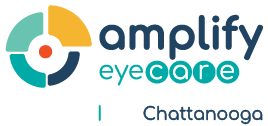Purpose
To compare oral reading fluency (ORF) in students with no/low astigmatism and moderate/high astigmatism and to assess the impact of spectacle correction on ORF in moderate and high astigmats.
Methods
Subjects were third- to eighth-grade students from a highly astigmatic population. Refractive error was determined through subjectively refined cycloplegic autorefraction. Data from students with ocular abnormalities, anisometropia, symptomatic binocular vision disorders, or refractive error that did not meet study criteria (no/low [cylinder < 1.00 both eyes, no significant myopia/hyperopia], moderate [cylinder ≥ 1.00 D both eyes, mean ≥ 1.00 D and < 3.00 D], or high astigmatism group [cylinder ≥ 1.00 D both eyes, mean ≥ 3.00 D]) were excluded. Oral reading fluency was tested with a modified version of the Dynamic Indicators of Basic Early Literacy Skills (DIBELS) Next test of ORF. No/low astigmats were tested without spectacles; astigmats were tested with and without spectacles. Mean ORF was compared in no/low astigmats and astigmats (with and without correction). Improvement in ORF with spectacles was compared between moderate and high astigmats.





